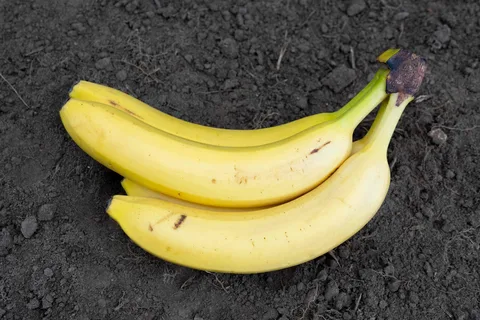7 Red Banana Benefits (And How They Differ From Yellow Ones)
Understanding Red Bananas
Introduction to Red Bananas
Red bananas, scientifically known as Musa acuminata, are a cultivar of bananas characterized by their reddish-purple skin and soft, creamy flesh. They are native to Southeast Asia but are now grown in various tropical regions around the world.
Nutritional Profile
Red bananas are rich in essential nutrients, including vitamins, minerals, fiber, and antioxidants. They contain similar nutrients to yellow bananas but may differ slightly in composition and concentration.
Health Benefits of Red Bananas
Rich in Antioxidants
Red bananas contain antioxidants such as vitamin C, polyphenols, and carotenoids, which help neutralize harmful free radicals in the body and reduce oxidative stress.
Heart Health
The potassium content of red bananas supports heart health by helping regulate blood pressure and reducing the risk of stroke and heart disease.
Digestive Health
Red bananas are a good source of dietary fiber, which supports digestive health by promoting regularity, preventing constipation, and supporting the growth of beneficial gut bacteria.
Energy Boost
Red bananas are a natural source of carbohydrates, which provide a quick and sustained energy boost, making them an excellent pre- or post-workout snack.
Eye Health
The carotenoids found in red bananas, such as beta-carotene, lutein, and zeaxanthin, support eye health by protecting against age-related macular degeneration and cataracts.
Immune Support
The vitamin C content of red bananas supports immune function by stimulating the production of white blood cells and enhancing the body’s ability to fight infections.
Mood Enhancement
Red bananas contain tryptophan, an amino acid that is a precursor to serotonin, a neurotransmitter that regulates mood, sleep, and appetite. Consuming red bananas may help improve mood and reduce symptoms of depression and anxiety.
How Red Bananas Differ from Yellow Bananas
Color and Appearance
The most obvious difference between red and yellow bananas is their color. Red bananas have reddish-purple skin when ripe, while yellow bananas have a bright yellow peel.
Flavor and Texture
Red bananas have a sweeter and creamier flavor compared to yellow bananas, with hints of raspberry and strawberry. They also have a softer texture, making them ideal for eating fresh or adding to smoothies and desserts.
Nutritional Composition
While red and yellow bananas share many nutritional similarities, red bananas may contain higher levels of certain nutrients, such as vitamin C and antioxidants, due to their vibrant color.
Availability
Red bananas are less commonly found in grocery stores than yellow bananas and may be more challenging to locate. They are often sold at specialty markets or stores that carry a wide variety of tropical fruits.
FAQs (Frequently Asked Questions)
Are red bananas genetically modified?
No, red bananas are a naturally occurring variety of banana that has been cultivated for centuries. They are not genetically modified.
Can red bananas be eaten raw?
Yes, red bananas can be eaten raw and are commonly enjoyed fresh as a snack or added to fruit salads, smoothies, and desserts.
Do red bananas have more sugar than yellow bananas?
Red bananas may have slightly higher sugar content than yellow bananas due to their sweeter flavor and higher concentration of certain sugars.
Are red bananas suitable for individuals with diabetes?
While red bananas are higher in natural sugars than some other fruits, they can still be enjoyed in moderation as part of a balanced diet for individuals with diabetes. It’s essential to monitor portion sizes and blood sugar levels.
Can red bananas be used in cooking and baking?
Yes, red bananas can be used in cooking and baking in the same way as yellow bananas. They add a unique flavor and color to recipes and can be used in dishes such as banana bread, pancakes, and muffins.
Do red bananas have a shorter shelf life than yellow bananas?
Red bananas tend to have a shorter shelf life than yellow bananas due to their softer texture and higher sugar content. It’s best to consume them when fully ripe and store them in a cool, dry place to extend their freshness.
Conclusion
Red bananas are a delicious and nutritious fruit that offers a range of health benefits, including antioxidant protection, heart health support, and digestive health promotion. While they share many similarities with yellow bananas, they differ in color, flavor, texture, and nutritional composition. Incorporating red bananas into your diet can add variety and vibrancy to your meals while providing a tasty and nutritious source of essential nutrients. Whether enjoyed fresh, blended into smoothies, or used in cooking and baking, red bananas are a versatile and flavorful addition to any diet.
- Sculptra Surrey – Collagen Stimulation Therapy Near Compton, Surrey - May 31, 2025
- Kratom Capsules For Mood Enhancement: How They Work - May 31, 2025
- Jaw Fillers For A Defined Jawline Near Kempton Park, Surrey - May 30, 2025

